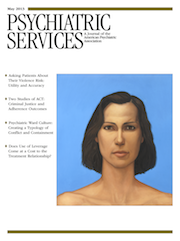Differences in Diffusion of FDA Antidepressant Risk Warnings Across Racial-Ethnic Groups
Abstract
Objective
Numerous articles have identified that medical technologies diffuse more rapidly among non-Latino whites compared with other racial-ethnic groups. However, whether health risk warnings also diffuse differentially across racial-ethnic minority groups is uncertain. This study assessed racial-ethnic variation in children’s antidepressant use before and after the 2004 black-box warning concerning risks of antidepressants for youths.
Methods
Data consisted of responses for white, black, and Latino youths ages five through 17 from the 2002–2008 Medical Expenditure Panel Survey (N=44,422). The dependent variable was any antidepressant use in the prior year. Independent variables were race-ethnicity, year, psychological impairment, income, insurance status, region, and parents’ education level. Logistic regression models were used to assess antidepressant use conditional on race-ethnicity, time, interaction between race-ethnicity and time, need, socioeconomic status, and Institute of Medicine–concordant estimates of disparities in predicted antidepressant use before and after the warning.
Results
The warnings affected antidepressant use differentially for whites, blacks, and Latinos. Usage rates among whites decreased from 3.3 to 2.1 percentage points between prewarning and postwarning, whereas usage rates remained steady among Latinos and increased among blacks. Findings were significant in multiple regression analyses, in which predictions were adjusted for need.
Conclusions
The findings indicate that health safety information on antidepressant usage among children diffused faster among whites than nonwhites, suggesting the need to improve infrastructure for delivering important health messages to racial-ethnic minority populations.



